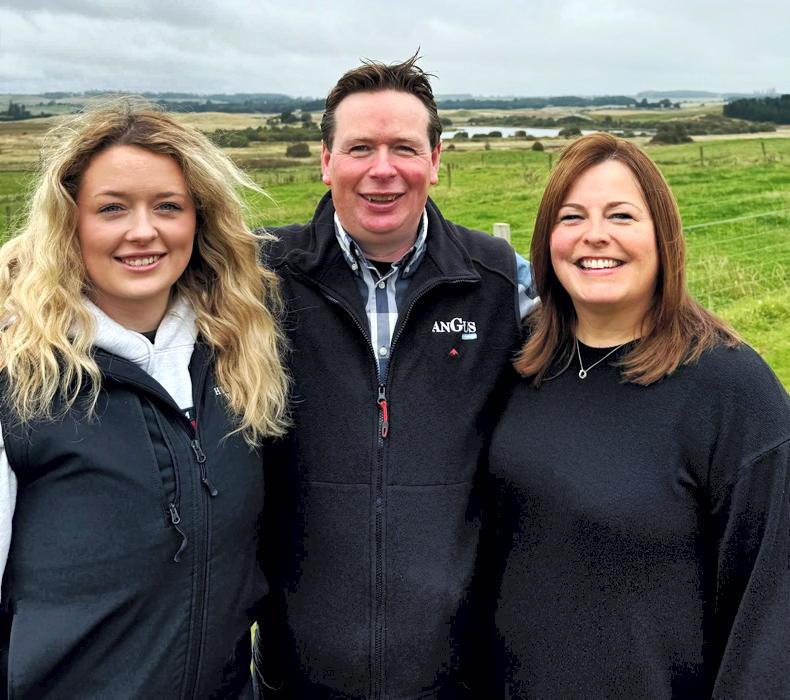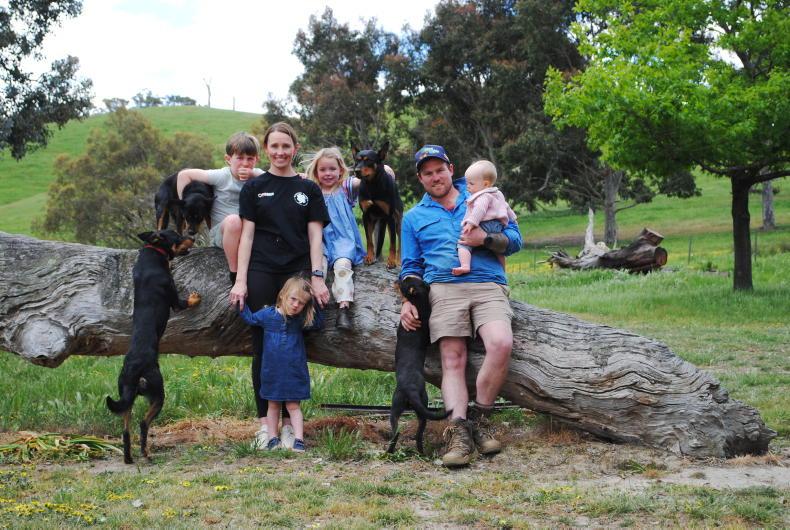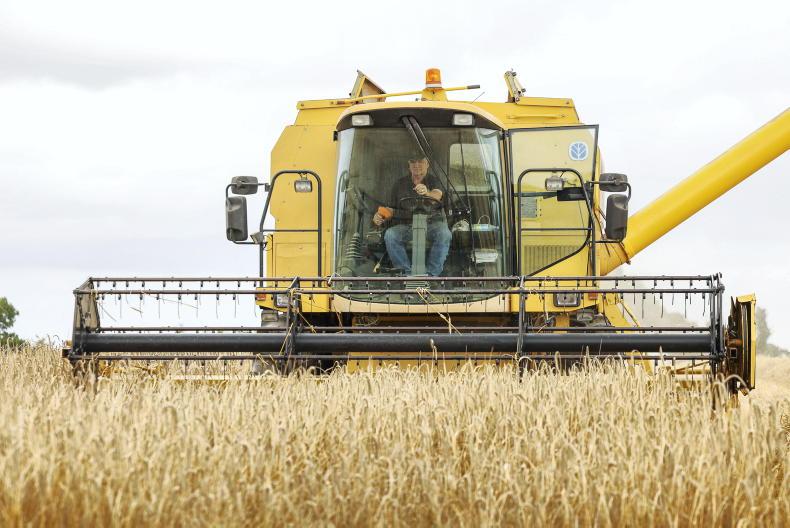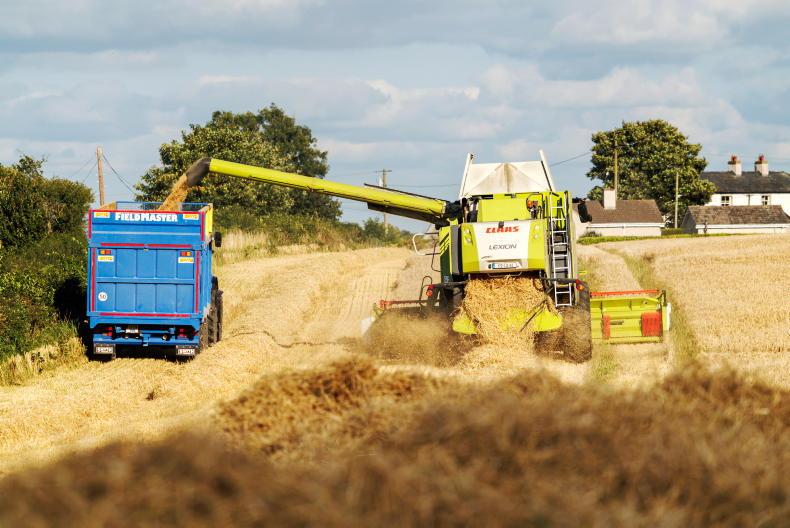Martin Downes plans to put 120 females in calf to calve between February and April next year. “I was just going through my breeding list – I’ve 90 cows and 20 heifers pulled out, so I’ll be looking to pick up some more heifers somewhere. We’ll try and put 120 to the bull if we can at all,” he said.

“The bull was out last week with some early cows. Originally, my plan was to calve a group (30) of cows ahead of the bulk of the herd (January). They would go to a small yard down the farm and there would be a break to the main herd’s calving and lambing.
“But a lot of them carried too long and there was no break this year – none calved in January at all,” he told me.
Martin runs a bull beef system on 87 (cattle) hectares on the outskirts of Multyfarnham village, Co Westmeath. The farm’s soil is predominantly heavy, which made it difficult for Martin to manage grazing cattle this spring.
The region was slower to heat up than other parts of the country, which left him tight on grass for a period too. The fact that Martin was often forced to move cattle on before paddocks were cleaned out as a damage prevention measure further compounded his grass shortage.
Feed costs
“I’ve cows in since September here – the cost of feeding them this spring has been astronomical. I ran out of silage at the end of April. We always had a month’s feeding kept aside here, but that was used.
“I have a patch of ground that I normally grow beet on and I had changed my mind to put barley in, but now I’ve changed my mind again with the spring that came – it’s going for arable silage.
“The mix is barley, oats and peas. I’ll plough it and reseed in August. There’ll be a good bulky crop of feeding going into the pit – there’s 12 acres in it. There’s also nine acres of beet going in, but I’ve moved that from an outfarm back to home,” Martin said.
Fodder beet forms an integral part of Martin’s bull finishing diet. He feeds 10kg of a simple energy-dense 30% barley and 40% maize-based concentrate, along with 8kg of beet, 3kg of silage and 0.75kg of straw.
“My fodder beet is running out so I’ll be moving to all-concentrate feeding soon. I’m just conscious that if I leave feed in front of them all the time (ad lib), the birds will have a field day. The export market for crows is no good at the moment, they’re too hard-finished!” he joked.
Martin plans to maintain a split-feeding regime, offering meals morning and evening to bulls and leaving forage in front of them at all times. What’s important in this situation is that there is head room for all animals in a pen to eat at once.
Martin generally grazes his bulls for a season prior to finishing. In 2017, his average bull carcase weight was 387kg at 23 months of age. They graded U= 3= and fetched €1,514 on average. His best bull weighed 471kg, grading U+ 3+ and coming into €1,873. He was Charolais-bred out of Martin’s stock bull, who has since been replaced.
Breeding
Martin’s new Charolais bull is by Major and will be three this September. His carcase weight (weight for age) figure is an impressive 46kg. Calving difficulty is running at 9.5% and, as expected, he is negative for daughter milk.
He will run with 40 cows that Martin does not necessarily want to keep daughters from. His replacement bull is a young Simmental out of Kilbride Farm Del Boy, who goes back to Raceview King.
He weighed 924kg on 4 April this year, despite being just 19 months of age. He holds €162 on the replacement index and brings a carcase weight figure of 38kg with a daughter milk figure of 10.1kg. To find such a strong all-rounder is a rarity.
This year, he will have to run with 40 cows – which isn’t ideal for his first season. The reason for this is that Martin’s former mature Simmental bull developed a bout of acute pneumonia soon after the period of snow this spring and was unfortunately lost.
“He threw great calves, I was very disappointed. There wasn’t a bother on him all year. I have three crops of calves from him. His first daughters had started to calve and they were a dream – quiet and easy-calving.
“Now I’m left with a dilemma – do I buy another bull as a backup or not? Given his size, I think he will be able for it. I know he’s young, but it’s still a risk. Having a spare bull that doesn’t get any work would be an expensive undertaking,” Martin said.
Martin’s other stock bull is an Angus that will run with his heifers. He has a calving difficulty of 2%, is strong for milk at 6.1kg, but weak on weight for age – his carcase weight figure is just 4kg.
“I actually had a couple of difficult calvings with him this year, but that might’ve been down to the cow. One also went down on me at calving and I couldn’t get at the calf properly.”
Martin is running tight at three bulls for 120 cows. His plan is to swap the bulls over after a month of breeding and to remain vigilant for repeats. Cows have been vaccinated against BVD and leptospirosis in advance of breeding.

















SHARING OPTIONS